Archive for the ‘52 Ancestors’ Category
52 Ancestors in 52 Weeks #61 & 62—Henric Miettinen & Anna Toivain
At last we reach the end of my series on the stories of my ancestors. Over a year ago, I took up the challenge of writing about 52 Ancestors in 52 Weeks. I began with my parents and worked backwards. At the end of last year, I had written about 52 ancestors, but it seemed a shame to stop part way through a generation. I elected to continue to relate what I know of each of my third great-grandparents. The final couple on this list is Henric Henricson Miettinen (ca. 1804-1836) and Anna Andersdöttir Toivain (1802-a. 1858).
Henric was born at Halivaara in the Karelian region of Finland about 1804. He lived there all his life and worked as a farmer.
On December 27, 1819, he married Anna Toivain in the Juuka parish. She was from the nearby village of Kajo. Together they had seven children:
- Carin, b. 1821,
- Henric, b. 1823,
- Christina, b. 1827,
- Margret, b. 1829,
- Johan, b. 1830,
- Anna, b. 1832, my great-great grandmother, and
- Brita, b. 1835.
Like so many Finnish men of the time period, Henric had a short life. When he was thirty-two years old, he contracted a fever. He died on October 22, 1836 when my great-great grandmother Anna was just four years old. Henric was buried in Juuka parish.
His wife survived him by a number of years. She lived until at least 1858. The previous year, she had attended the local kinkeri, or religious meeting, in Juuka parish where confirmed Lutherans were required to demonstrate their knowledge and understanding of the Lutheran faith. In 1858, her name appears on the communion register, but no record of her has been found after that.
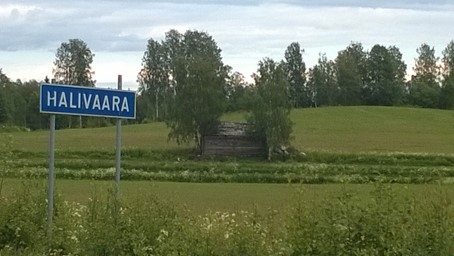
52 Ancestors in 52 Weeks #59 & 60—Henric Lambin & Walb Ruottin
My third great-grandfather Henric Mårtensson Lambin came into the world on December 2, 1806 at Nunnanlax, in the old Swedish county of Savolax and Karelia. Three years later, the Swedes ceded their Finnish lands to Russia, and Finland became a Grand Duchy. Henric lived most of his life as a subject of the Tsar of Russia.
Henric’s parents had him baptized in their local Juuka parish on January 5, 1807. This parish lies on the western shore of beautiful Lake Pielinen, near present-day Koli national park and the highest point in Finland. The land is heavily forested and known for its soapstone deposits.
Henric grew up to be a farmer. When he was twenty years old, he married Walb Johansdottir Ruottin (b. abt. 1808) from the nearby village of Ahmovaara. The wedding took place in Juuka parish on October 14, 1827.
Henric and Walb had two known children, Henric (b. 1832) and my second great-grandfather, Matti (b. 1835). The family originally lived at residence no. 24 in Henric’s home village, Nunnanlax.
By 1837, they had moved on to the village of Kuhnusta. There, Henric soon was stricken with typhoid fever and died at the age of 30 on February 10, 1837. He was buried in the Juuka parish.
Walb remarried the next year on September 1, 1838, again in Juuka parish. Her second husband was Christer Mårtensson Karjalain (ca. 1811-1842). Walb and Christer also had at least two children, Eric (b. 1839) and Christina (b. 1841). When Christina was just a few months old, Walb tragically lost another husband. On June 2, 1842, 31-year-old Christer died of a heart attack.
A few years later, Walb married for the third time. On April 14, 1850, she and Anders Rompanen were married in the Juuka parish. His fate is unknown.
After 1850, Walb’s name appears as Walborg in the church communion book for her son Henric’s household in Kuhnusta. The final listing came in 1860 when she would have been about 52 years old. It is unknown how long she lived after that. Probably she, too, is buried in the Juuka parish. Here is the current church building, built in 1851:
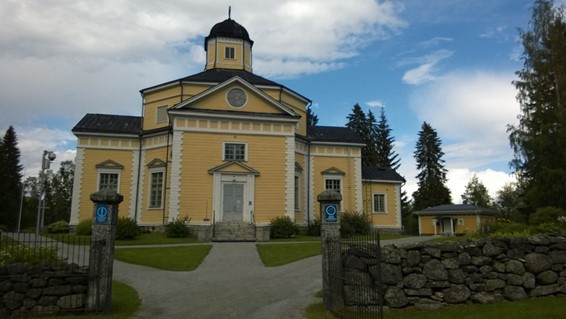
52 Ancestors in 52 Weeks #57 & 58—Simon Myllynen and Sofia Ampuja
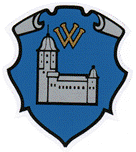 During the 19th century, my Myllynen ancestors lived near what was then Finland’s second-largest city, Viipuri. This municipality lies east of the Baltic Sea on the Karelian isthmus at a distance of 81 miles northwest of St. Petersburg. It is known for its landmark Vyborg Castle, built by the Swedes in 1293.
During the 19th century, my Myllynen ancestors lived near what was then Finland’s second-largest city, Viipuri. This municipality lies east of the Baltic Sea on the Karelian isthmus at a distance of 81 miles northwest of St. Petersburg. It is known for its landmark Vyborg Castle, built by the Swedes in 1293.
When the Viipuri parish was ceded to the Soviet Union after World War II, all the Finns left and resettled in other parts of modern Finland. Today the town of my ancestors is known as Vyborg and only Russians live there.
Simon Mattson Myllynen was born at Tervajärvi on July 8, 1810 to Matti Johansson Myllynen and Anna Simonsdottir. They had him baptized a couple of days later in the Viipuri rural parish. When Simon grew up, he married a local girl, Sofia Hendriksdottir Ampuja. Their marriage took place in the Viipuri rural parish on December 11, 1831 when he was 21 and she was about nineteen. They made their home and raised their children at Tervajärvi.
Simon and Sofia had ten children:
- Matthias, born February 10, 1834,
- Elisabeth (Liisa), born April 25, 1836, my second great-greatmother,
- Henric, born December 24, 1838,
- Helena, born May 27, 1841,
- Henric, born May 27, 1841,
- Regina, born June 1, 1844,
- Philip, born April 15, 1847,
- Adam, born March 11, 1849,
- Adam, born May 30, 1851,
- Filip,born May 20, 1851.
Simon worked as a farmer. He did not have along life, and he passed away at Tervajärvi on April 10, 1857 at the age of forty-six. He was buried at the Viipuri rural parish a week later on April 17, 1857.
52 Ancestors in 52 Weeks #55 & 56—Abel Mattila and Greta Caspersdatter
This week my Finnish line of third great-grandparents begins its turn to have their stories told. These last posts in this series will have to be brief because I know very little about these people.
Abel Andersson Mattila (1798-1852) was born about 1798 during the time when Finland was under Swedish rule. The Swedish language predominated in the country during that time, but we do not know whether Abel was bilingual. His family probably spoke Finnish, although the country kept legal records in Swedish. Abel must have had exposure to Swedish because the southern part of Finland where he lived was heavily populated with Swedes during his early years.
While Abel was still a boy, the country changed hands after several hundred years of affiliation with Sweden. Finland became a Grand Duchy of the Russian Empire in 1809 when the army of Czar Alexander I took the country in the Finnish War. The Russians were more accepting of the Finnish language than the Swedes had been, but Finnish did not achieve equal legal status until 1892, long after Abel’s death.
After Abel reached adulthood, he married Greta Caspersdatter, a woman of his own age who was also born about 1798. The couple settled at Kimböle, in the Uusimaa Province of southern Finland. Abel made a living as a “bonde”, or farmer.
The couple had five known children:
- Eva Mattila, born 1824,
- Anders Abelsson Mattila, (1826-1882), my great-great grandfather,
- Abel Mattila, born 1829,
- Anna Mattila, born 1832,
- Johannes Mattila, born 1842.
Abel died of a heart attack on April 22, 1852 at Kimböle when he was about fifty-four years old. Heart disease was rampant in Finland in the nineteenth century, and even today many of my Finnish relatives die from it.
Abel was buried May 9, 1852 in the Lapinjärvi parish of Uusimaa.
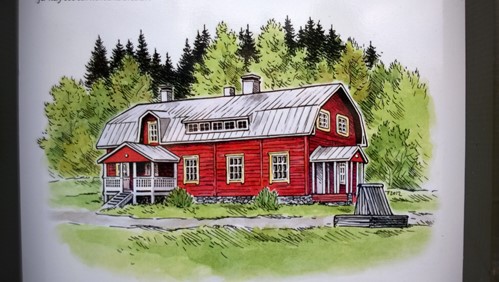
An 18th-century Finnish farmhouse
52 Ancestors in 52 Weeks nos. 53 & 54—Hans Pedersen and Maren Andersdatter
 Hans Enok Pedersen, my third great-grandfather, lived to be 84 years old. At the time of his death, he had a headful of thick hair with very little gray in it. Descendants, including my own mother, inherited this characteristic.
Hans Enok Pedersen, my third great-grandfather, lived to be 84 years old. At the time of his death, he had a headful of thick hair with very little gray in it. Descendants, including my own mother, inherited this characteristic.
Hans was born to Peder Andersen and Martha Johnsdatter on July 18, 1813 on the island of Øksnes, Vesterålen, Nordland in the Kingdom of Danmark-Norge. He was baptized at Øksnes parish the following autumn on the 28th of September.
When he was twenty-three years old Hans married Maren Anna Serina Andersdatter who was born at Malnes in the Bø Municipality of Vesterålen, Nordland. We do not know her birth date, but she was baptized on March 14, 1813 in Bø parish. The wedding of Hans and Maren took place at the Øksnes church, and Hans worked on the Fjeldgrimstad farm in Øksnes at the time.
Hans and Maren had at least two children:
- Martha Karoline Dorthea (my 2nd great grandmother), born March 20, 1841,
- Enok Andreas, born about 1850.
Eventually, the young family settled on the Dungan farm in Øksnes where Hans worked as a tenant farmer. In 1868, Maren served as godmother for her ill-fated granddaughter, Anna Marie Birgitte Sivertsdatter. Anna Marie was Martha’s third child, and she lived to be only a year old.
Maren passed away at about the age of 74, on July 5, 1886. She was buried in the Øksnes parish a couple of weeks later, on July 19, 1886.
Hans died several years later, on January 16, 1898. He was buried the following summer on July 11, 1898. His daughter Martha outlived him by only a couple of years.
52 Ancestors in 52 Weeks #51 & 52—Knud Sjursen and Brita Kristoffersdatter
 Knud and Brita, my third great-grandparents, were rebels.
Knud and Brita, my third great-grandparents, were rebels.
Both were born in the Hordaland District of Norway, but they fled their homes so they could marry. She was born into a higher-status family than he, and that was a barrier to their marriage. No matter. Together they went north to Nordland, and they did as they pleased.
Knud Sjursen was born on February 23, 1816 at Fenne Farm in the Voss Municipality of Hordaland. He was baptized two days later in the Vangen parish. His parents were Sjur Mathissen and Ingebor Knudsdatter. It seems he was named for his maternal grandfather.
Brita, the daughter of Christopher Monsen and Martha Olsdatter, was born just a few weeks before Knud, on January 9, 1816, at Oppeim, also in the Voss Municipality. She was baptized a month later, on February 2, 1816, at Voss.
Both Knud and Brita followed the same rites of passage as most other Norwegian youths of their time. They received their smallpox vaccinations and were confirmed in the Lutheran church.
By 1842, when they were 26 years old, they had both left their families and made their way to the distant island of Øksnes in the Vesterålen District of Nordland. Knud found work on the Sorsand farm, and Brita was on the Vottestad farm. They got married in Øksnes parish on July 11, 1842. Together they went on to have six children:
- Sivert Knudsen (1843-1907), my second great-grandfather,
- Kristoffer Knudsen (b. about 1844),
- Ingeborg Knudsdatter (b. about 1846),
- Elias Knudsen (b. about 1849),
- Karoline Knudsdatter (b. about 1853),
- Karl Knudsen (b. about 1860).
By 1865, the family had moved on to the Bjorndal farm in the Hadsel Municipality of Vesterålen. Knud worked as a tenant farmer. He and Brita stayed there for the rest of their lives and watched their family grow. On July 15, 1866, they served as godparents for their son Sivert’s first child, Kaspara Helmine Sivertsdatter at Øksnes.
After a lifetime together, Knud was the first to pass away. He died on February 24, 1885, the day after his 69th birthday. He was buried two months later, on April 12, 1885 in the Eidsfjord parish of Nordland.
Brita outlived him by just two years. She died on January 2, 1887, a week before what would have been her 71st birthday. She was buried the following spring, on May 30, also at Eidsfjord parish.
Knud and Brita had successfully defied their families to be together. Their marriage lasted 42 years.
52 Ancestors in 52 Weeks #49 & 50—Johan Larsen and Sara Möllersdatter
My third great-grandfather Johan Larsen was born March 22, 1824 on the island of Alstahaug in Nordland, Norway, just south of the Arctic Circle. His parents Lars Hemingsen and Jonelle Jonsdatter had him baptized in the Herøy i Alstahaug parish some time later.
When he was twenty-one years old, Johan married Sara Andrine Möllersdatter in the same parish on the nearby island of Slapøen on July 19, 1845. Sara was the daughter of Möller Zacariasen. Much older than Johan, Sara had been born about 1814 on the Berfjorden farm in the Alstahaug Municipality.
The couple set up housekeeping at Slapøen and began their family:
- Johana Maria, born at Slapøen on September 25, 1845,
- Bergitta Susanna, born at Slapøen on September 8, 1848,
- Karen Marie, born at Titternes farm in Dønnes on April 7, 1851 (my great-great grandmother),
- Ludvig Edvart, born at Næsna in Dønnes on May 17, 1855,
- Anne Margrete Kristine, born at Skeidsøen farm in Dønnes on March 12 1859,
- Mortine Lovise, born at Skeidsøen farm in Dønnes on June 19, 1863.
As he raised his family, Johan became a small landholder at Skeidsøen, and he worked sometimes as a fisherman. Perhaps during the fishing season that ran from January to May each year, he traveled with the other men from his area to the rich Lofoten fishing grounds north of Dønnes to earn some extra cash.
On March 6, 1876, shortly before his 52nd birthday, Johan died in a fishing accident. His death is recorded not in his home parish in Dønnes, but further north in Lofoten. He must have gone there to fish that season. Many of the deaths recorded on the same page of the Vågan parish register in Lofoten note a death at sea, so perhaps that is how Johan died, too. It seems the boats lost many men that fishing season.
Johan was buried later that month on March 25, 1876 in the Vågan parish of Lofoten.
Sara remained at Dønnes to live out the remainder of her life. She passed away on August 1, 1880 when she was about 66 years old. She was buried in the Herøy I Herøy parish.
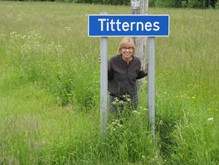
52 Ancestors in 52 Weeks #47 and 48—Anders Bentsen and Anne Larsdatter
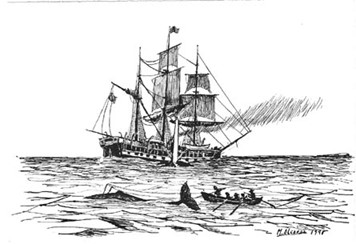 Anders Bentsen was the last Bentsen ancestor of mine who did not immigrate to America. He was also the man from whom my mother’s family took their surname when they did move to the United States from Norway. Because most Norwegians of his time did not have surnames, the family had to choose one when they immigrated. In Norway, they were known simply by their father’s name (a patronymic) plus the name of farm where they lived.
Anders Bentsen was the last Bentsen ancestor of mine who did not immigrate to America. He was also the man from whom my mother’s family took their surname when they did move to the United States from Norway. Because most Norwegians of his time did not have surnames, the family had to choose one when they immigrated. In Norway, they were known simply by their father’s name (a patronymic) plus the name of farm where they lived.
Anders was the son of Bent Iversen. Thus, his patronymic name was Bentsen, or Bent’s son. When Anders’ son Lorenz Nikolai and his grandson Ole Jørgen crossed the pond, they both decided to call themselves Bentsen, as their patriarch had, instead of using their own patronymic names, Andersen and Lorenzen.
Anders was born October 16, 1823, perhaps at the Norwegian coastal city of Bergen. By 1844 he had relocated north to the cod fishing area of Nordland, Norway, north of the Arctic Circle. He lived in Bø parish on one of the islands in the Vesterålen District and worked as a cottager. He fished, too, and sometimes worked on a whaling ship. One time they harpooned a huge whale off the north coast of Norway. It started pulling them toward Russia so they cut the line and let it go.
Anders’ daughter Christina Andrea was born at Bø on August 28, 1851. Anders finally married her mother, Anne Larsdatter, a couple of months later on October 24, 1851. They later had a son, Lorenz Nikolai, born on July 5, 1854 on Fjærvold farm.
In 1857, life for Anders and Anne took a terrible turn. On April 17 of that year, Anders reported the February 25 birth of an unnamed stillborn son. The following fall, Anders came down with a terrible fever.
He never recovered. Anders passed away from the fever on September 11, 1857 at the age of thirty-three. He was later buried in Bø parish on October 18. He left behind a widow, a six-year-old daughter, and a three-year-old son. That son grew up and emigrated to America.
Although Anders died young, Bentsen descendants live across the United States today.
52 Ancestors in 52 Weeks no. 46—Rhoda Hall (1784-1850)
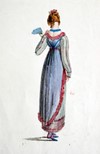 My ancestor Rhoda Hall was born to a father, Gershom Hall, who was a Revolutionary War soldier and a mother, Lucy Snow, who died young. Rhoda was born on March 12, 1784, in Massachusetts.
My ancestor Rhoda Hall was born to a father, Gershom Hall, who was a Revolutionary War soldier and a mother, Lucy Snow, who died young. Rhoda was born on March 12, 1784, in Massachusetts.
Rhoda had a couple of older siblings and several who were younger. She was probably pressed into duty to help care for them after her mother died in 1795 when Rhoda was eleven years old.
On June 2, 1805, Rhoda married a local saltmaker, Benjamin E. Dunbar, in Chatham, Massachusetts. She was 21 years old and he was twenty-eight. Rhoda and Benjamin had twelve children, including my ancestor Olive Hall Dunbar. They lived at Chatham until shortly after 1830.
By then the saltmaking business on Cape Cod was no longer profitable. The family left Cape Cod and moved away to Stow, Ohio. Why they chose this location remains unknown.
Benjamin died shortly after their arrival, leaving 47-year-old Rhoda a widow with most of her children still at home. Benjamin had provided for her, and the family had some land in Stow. They lived at the north end of town. Rhoda sent her children to school and served as the executor of Benjamin’s estate.
She remained in Stow for most of the remainder of her life. In 1850, when the U.S. census was taken, she was enumerated in her daughter Olive’s household in Mendon, Michigan. Perhaps she was visiting there.
According to Rhoda’s cemetery marker, she passed away that same year at the age of sixty-six. She was buried next to her husband in the Stow, Ohio cemetery.
52 Ancestors in 52 Weeks, no. 45, Benjamin E. Dunbar (1776-1831)
This ancestor came into the world on December 1, 1776, just as the Revolutionary War was beginning. He was named after his father, Benjamin Dunbar (b. 1749). His mother was Hannah Hathaway. Young Benjamin was joined by a brother, Hosea, the next year. The family lived in Halifax, Massachusetts, but it did not remain intact for long. The father died when Benjamin and Hosea were just small boys.
We know nothing more of Benjamin’s young life. By the time he had reached his late 20’s, he had moved down the coast of Massachusetts to Chatham, on Cape Cod. There he married Rhoda Hall on June 2, 1805.
Benjamin became a saltmaker at Chatham. The British blockade during the Revolutionary War had made it impossible for the colonists to obtain salt, so they began experimenting making salt from seawater. Benjamin owned one of the numerous saltworks along the coast. Perhaps his operation looked like this replica found in the museum in Chatham:
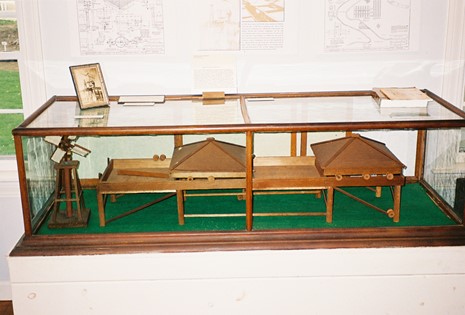
During his years as a saltmaker, Benjamin and Rhoda raised their large family at Chatham:
- Safronay (b. 1806)
- Rhoday (b. 1807-bef. 1810)
- Daniel H. (b. 1809)
- Rhoda Ann (b. 1811)
- Benjamin S. (b. 1812)
- Moses (b.1814)
- Rebecca W. (1817-1873)
- Susannah H. (b. 1819)
- Hannah S. (b. 1821)
- Olive Hall (1823-1902), my ancestor
- Lucy Snow (b. 1827)
- Laura Ann (b. 1829)
During these years, America fought the British in the War of 1812. Benjamin did his part by serving in the Massachusetts militia. He was a private in Captain Hugh Nickerson’s Company of Infantry, Snow’s 2nd Regiment. They marched in the defense of Eastham from September 15-17, 1814. Benjamin earned wages as the rate of $8 per month, for a total of $.53. His other compensation included $.40 for rations, $.17 for private’s clothing, and $.03 for arms. For supplies he had a musket with iron rod, a bayonet, a scabbard and belt, 3 flints, 1 cartridge box, 24 cartridges with balls, a knapsack, and a blanket.
After the war, outside competition eventually ruined the salt trade for Cape Cod. Benjamin and his family stayed there through 1830 and then made the decision to move on.
They relocated to the interior of the country, settling in Stow, Portage County, Ohio. Unfortunately, Benjamin’s life was nearing its end. Before he could build a new life for himself and his family, he passed away at the age of 54 on September 11, 1831.
Benjamin E. Dunbar was buried in the Stow Cemetery, in Portage [now Summit] County, Ohio.